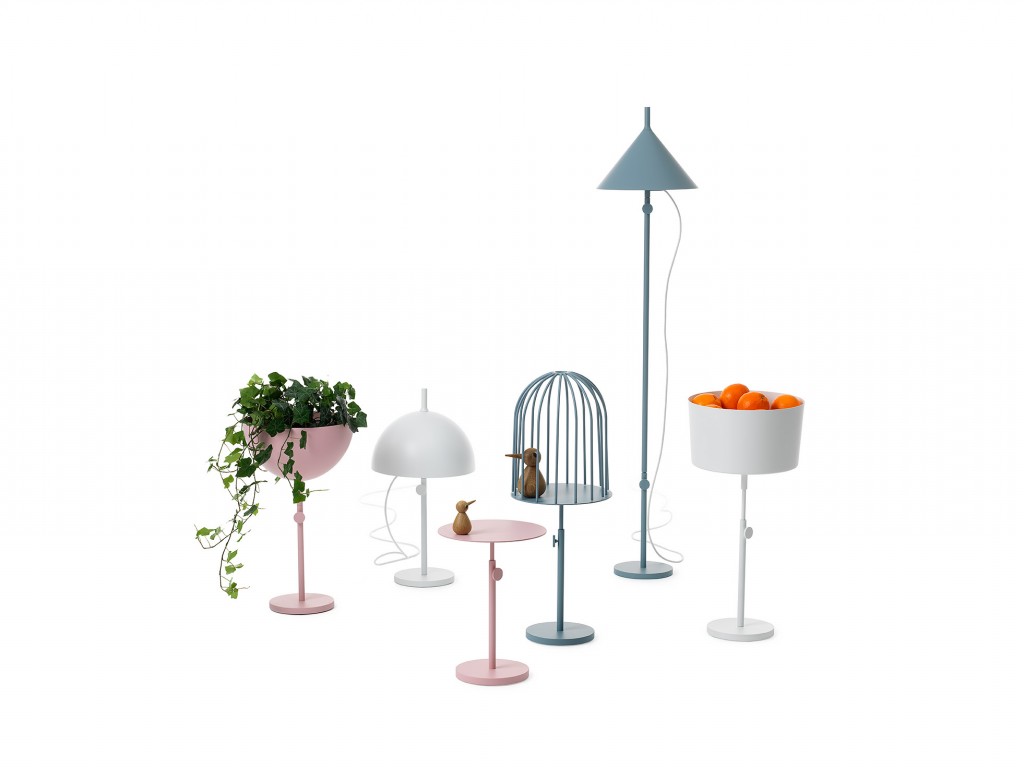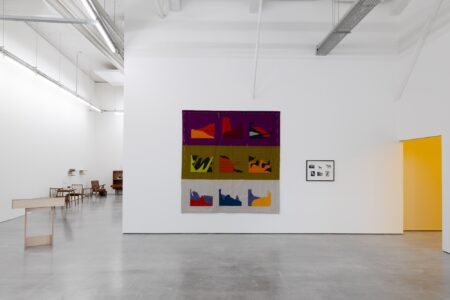Spazio Nobile House & Gallery
Culture-maker duo Lise Coirier and Gian Giuseppe Simeone pool 20-years of expertise to launch Brussels-based Piano Nobile gallery this April – capturing the applied arts renaissance.
Bringing their respective cultural, art and design expertise together, couple Lise Coirier (Pro Materia and TLmag) and Gian Giuseppe Simeone (Culturelab) launch PSpazio Nobile gallery this April. Aggregating years of experience in publication, project, workshop, exhibition initiation, management and realisation, the new Brussels-based venue will fill a void by addressing the ever-expanding field of the applied arts. Transcending art, design and craft, this discipline will be explored through a series of intellectual and visceral showcases, presented in a tangibly domestic setting. Positioned in Brussels burgeoning gallery district, Spazio Nobile promises to set a new standard. TLmag spoke to the culture-maker duo about their new cumulative venture.
TLmag: What was the idea behind using the name Spazio Nobile – a term normally used to describe the main floor of a Renaissance-era palazzo?
Lise Coirier & Gian Giuseppe Simeone: The name “Spazio Nobile” corresponds to the architectural space we will occupy, a 1920s “bourgeois” townhouse strategically located in the hip Ixelles neighbourhood. In fact, the gallery will take-over what was our first apartment. Used as an place to express the authenticity of our art and design vision, three aligned and intimate rooms offer natural light from either end: the street and back garden. Accessed like a home rather than a boutique, the ‘bel étage’ gallery will offer a domestic context for the work we plan to showcase. The main floor will be used to present select applied arts exhibitions: design and photography; tangible objects and ethereal images; the measurable and abstract, contemporary and archeological approaches. Spazio Nobile will bind these various directions in a singular yet personable environment. Championing narrative-based limited edition or installation works, we hope to capture and inspire a renaissance of applied arts; a cultural facet that strongly evokes the human senses. This point of view is not only intellectual but sensorial in nature.
TLmag: As an applied arts gallery, how do you hope to differentiate yourself from other venues dedicated to design and/or art? Where do you draw the line between these related disciplines?
L.C.&G.G.S: By definition, the term applied arts refers to creative conception and production achieved outside of pictorial, architectural or sculptural practice; otherwise understood as the fine arts. However, much of the applied arts employ elements of these respective disciplines. Traditionally, three centuries of French culture and academia ranked artistic activity into classifications of the noble (fine) and minor arts: jewellery, ceramics, glass, tapestry, furniture, decoration, ect. With the advent of Anglo-Saxon design reform in the mid to late nineteenth-century – the Arts & Crafts movement and its influence on the Bauhaus – these divisions were dissolved. Today, the notion of creation disregards hierarchy and engages new media like photography, typography, graphic communication or design.
The boundaries between the applied arts and design are increasingly flexible. The very term is less and less concrete and at times, encompasses a wide range of translative or interpretational endeavours. Alluding to the semantic origin of both “drawing” and “planning,” design implies the conception of mass or serially produced objects. If so, the areas of decoration, interior architecture, furniture-making, ceramics, glass or graphic design fall into their own expertise. Wary of constricting labels, many people call themselves creators today. In reality, designers and painters use the same tools and processes. In this light, photography can be seen as both an applied and fine art with a balance of technique, material transformation, and ongoing aesthetic pursuits. Naturally, we refer to a certain type of photography; one that is reflective, contemplative, analytical and susceptible to harmonising with other art objects. At Spazio Nobile, we will focus our activities on the applied arts, design and photography; three fields that we don’t delineate within strict categories.
Operating as a “aesthetic laboratory,” the gallery will seek to promote experimentation, aesthetic investigation, material research and aligned functionality. The transcendence of handicrafts and 3D-printing technology remains important to our vision. However, we will try to avoid generalised concepts that are culturally diluted. With that, Spazio Nobile will elevate the term “métiers d’art” far beyond traditional and repetitive artisan practice.
TLmag: How will the gallery’s programme transcend both of your interests in contemporary art, architecture, archeology, design, culture, ect?
L.C.&G.G.S: With our respective agencies – Culture Lab and Pro Materia – we’ve each spent 20 years working in the creative industry. For us, culture is much more than just ‘the cherry on top of the cake.’ It has real, added, and intrinsic value in a tolerant and balanced society. As cultural entrepreneurs, we endeavour to take risks: find, promote and connect the right partners. Our network reflects both contemporary application and artistic heritage. Combining theories in art history, archeology and cultural heritage with hands-on activities, workshops, exhibitions and public outreach, we have built an approach. We are multitasking writers, journalists, curators, publishers, experts and managers that draw innovative concepts for progress in our multicultural society. Our belief in this ‘savoir-faire’ can be connected to a material, the creation of an object or image through photography or video art.
We conceived Spazio Nobile Gallery as a place for thought, exchange and the display of object selections. We are willing to explore themes, not just specific designers or artists. Our showcases will put multiple creatives into dialogue with each other. Within this frame, exhibitions will evolve through time as we launch capsule collections. The gallery will host a series of events that follow our magazine’s biannual schedule: spring-summer and autumn-winter. We’ve thought of creating cross-cultural gatherings that echo a convivial attitude. Our fully-equip kitchen can accommodate 40-people dinners or breakfasts. We plan on setting up long tables across the three rooms for such happenings. The space will also function as headquarters for Pro Materia and TL magazine.
TLmag: Explain the idea of commissioning creatives to design interior elements in the gallery as an extension of representation.
L.C.&G.G.S: ‘Commission’ is a big word. We prefer the term collaboration as we continue to cooperate with talented creatives that we’ve followed for years. For example: Belgian Nathalie Dewez – who has a real passion for light and other materials like glass or metal; wood master Kaspar Hamacher – who has transcended art, design and craft; or Nedda El-Asmar and her collaboration with Belgian decorative hardware manufacturer, Maison Vervloet. We have a strong appreciation for the latter’s gift in silversmithing, she often deploys for Puiforcat and Hermès. El-Asmar’s quest for beauty through simple but highly sophisticated gestures is exactly what we’re looking to capture. All three designers have a capacity to experiment and apply their concepts to real-life environments that make their creations tangible, tactile and attractive. The manufacturing processes we will spotlight are explicit and can be evoked in photography, video, music, or interviews.
The gallery will feature Dewez’s Moon pendant lamp – a brushed stainless steel sphere that has a minimal interaction with curvilinear elements – and an exclusive limited edition of a three-metres-long metallic Still Hanging lamp. Spazio Nobile’s Cuisine will benefit from her silvered-glass Miroir aux Alouettes (Smoke and Mirrors). For the space, Hamacher conceived a limited edition of four three-metre-long counterbalanced Long Shelves, used for as a potential place for a library or display. In Seasons 2, Dewez and Hamacher will be featured among other juxtaposed talents. Thomas Ferenbach has designed with Italian brand Neonlauro (known for its creations at the Venice Biennial) Spazio Nobile’s window-mounted neon sign. Tomáš Libertíny will present his Paper Vase in the space, next to Carlo Brandelli’s Lost Glass sculptures made in Murano. To express our quest for beauty and functionality, we have also chosen to collaborate with high-end Belgian and international brands that have all in common to be also manufacturers, able to co-create projects with designers, architects, such as Vervloet (BE), Lasvit (CZ), Materialise (BE), Thonet (DE), Wästberg (SE), Limited Edition/2Tec2 (BE), Delta Light (BE). These selections reflect each design house’s ability to produce real-life concepts with noble materials; apply craft and the applied arts. While Thonet works wood in new ways, Limited Edition/2Tec2 explore the versatility of the flooring culture, Lasvit pushes the limits of blown, cast and moulded crystal. Materialise is at the forefront of 3D prototyping, while Wästberg is celebrated for its quintessentially Nordic lighting design. Delta Light offers the precision and light source quality needed for a space with a high ceiling.
TLmag: How will Spazio Nobile complete the trifecta of representation and communication Pro Materia offers in terms of web coverage, print curation, and project coordination?
L.C.&G.G.S: The idea of opening a gallery has been in the pipeline for a long time. A ‘Spazio Nobile’ with a garden is a dream come true. We lived in this space when starting our careers 20 years ago and have returned to establish something of our own cultural hub. Our goal is to return to this urban setting and attract an international audience. Both of us travel extensively throughout Europe and the world for different projects but now have a base that can unite our different ventures. Much of what we plan on accomplishing at Spazio Nobile will echo the success of our different publication, curatorial, workshop and archeological projects. Establishing the gallery together is the perfect opportunity to reveal our shared vision and varied skills. It will be a commercial endeavour – extending another arm to our practice; selling the work we might have feature in print or initiated – but also as a new challenge. This will also be presented online.
Spazio Nobile Gallery: rue Franz Merjay 142, Brussels (Wednesday – Saturday, 11:00 to 18:00)
Spazio Nobile opens with Season I: photographer Vincent Fournier’s Post Natural History. Vernissage: 19 April (18:00 – 22:00). Nocturne: 20 April (18:00 – 21:00). Art Brussels Parcours VIP & Collector Tour: 21 – 24 April (11:00 – 18:00)
Spazio Nobile, in collaboration with:
Bis Lighting, Gilles & Boissier, Carlo Brandelli, Delta Light, Nathalie Dewez, Kaspar Hamacher, Kvadrat, Materialise, Michel Penneman – Interior Architect, Glass is Tomorrow, Lasvit, 2TEC2/Limited Edition, Samsung Serif / Bouroullec, Thonet, Tomáš Libertíny, Vervloet, Wästberg





















